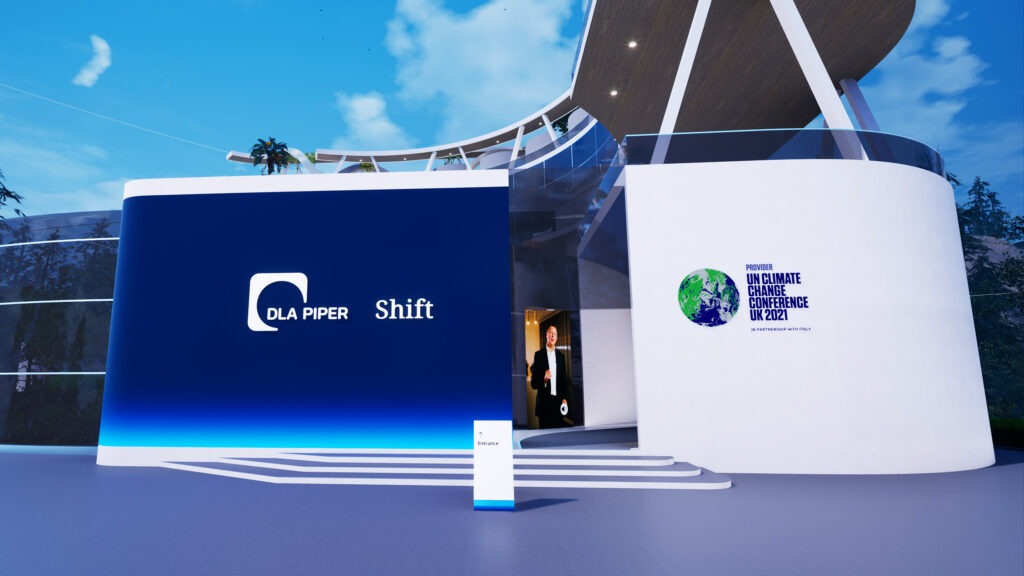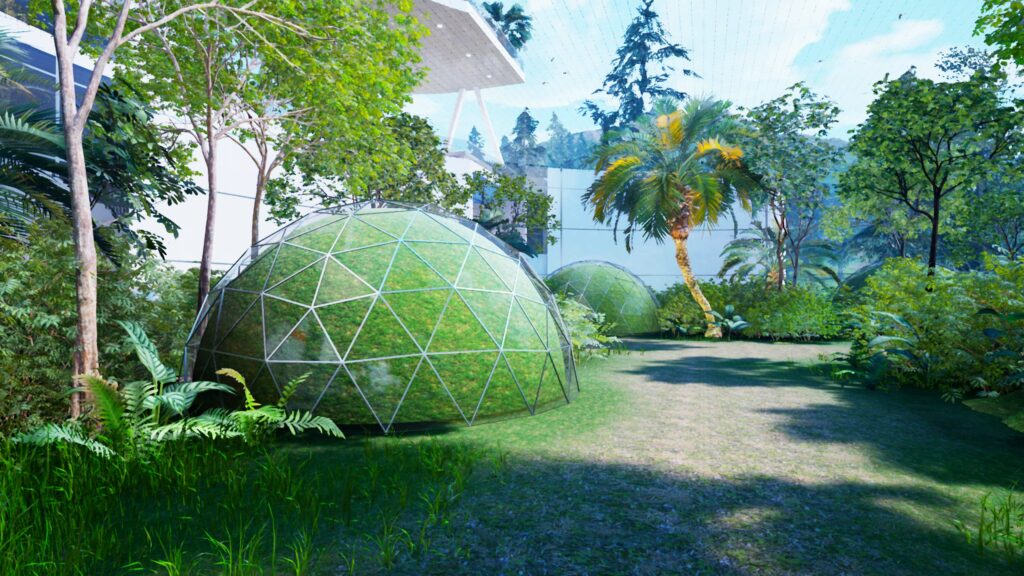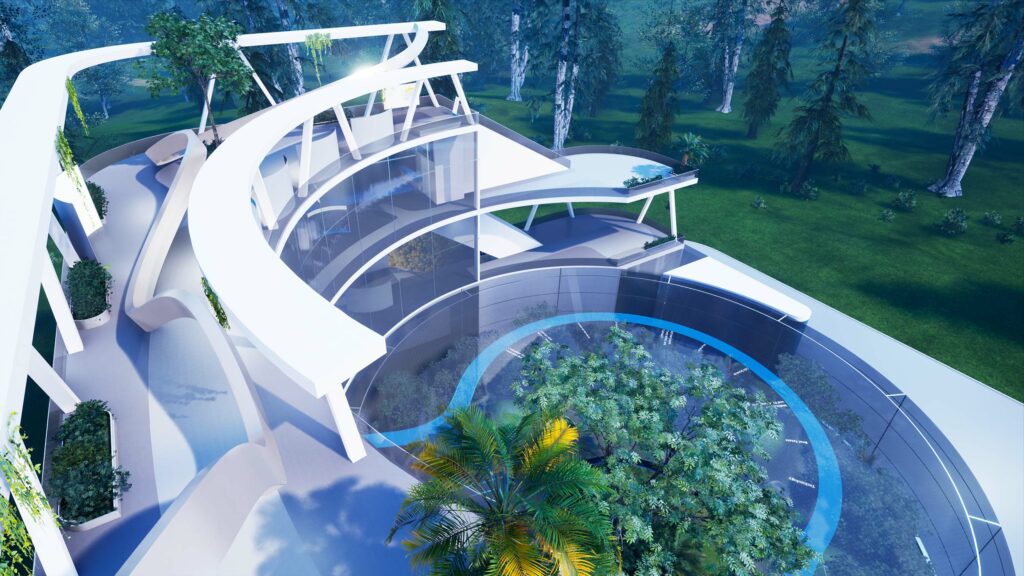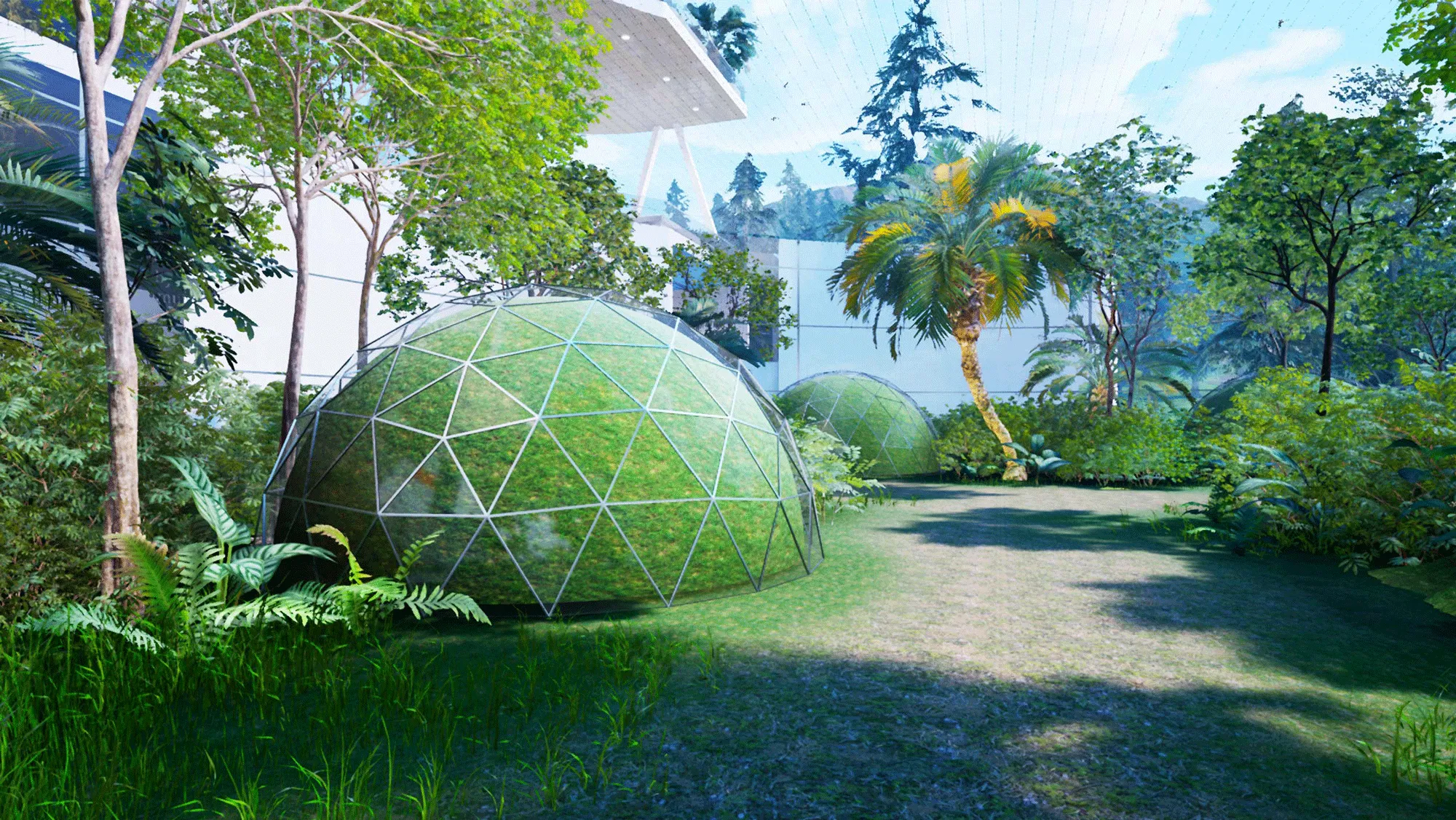Senior Designer, Samantha Miller, reflects on embracing the complexity of an ambitious Enter Agora brief.
“Sam, it’s time you took the lead on an Enter Agora project. The next one’s yours.”
When Will, our Founder & Creative Director, said this to me at the beginning of September, I was filled with equal parts excitement and trepidation. I was thrilled to be working on a ground-breaking, meaningful project: “Shift” – global law firm DLA Piper’s sustainability showcase for COP26. Yet I was also nervous – the timescales were tight, the brief was wide open.
 Our client DLA Piper has used Enter Agora to create Shift, a virtual experience which allows visitors to browse their sustainability news, insights and analysis during COP26.
Our client DLA Piper has used Enter Agora to create Shift, a virtual experience which allows visitors to browse their sustainability news, insights and analysis during COP26.
Innovative work comes from stepping out of your comfort zone. But more than that, it comes from collaborating with people whose skills complement your own. At Within International, we are used to working together across time zones, on complex briefs with multiple stakeholders and many moving parts. However, designing for Enter Agora, our virtual environment where anything is possible, exercised muscles that hadn’t had much use in the last 18 months of lockdown life.
We have all become very used to a “flat” world – the world seen through our phones, laptops, and televisions. Whilst they are still an incredible resource to connect us to outside reality, many of our digital interactions lack depth and sensory appeal. Environments in Enter Agora can never replace “real world” experiences, but they do allow us to engage with content in a fuller and more tactile way than your average website or app.
 As part of Shift’s rich environment, we created sensory ‘pods’ inside the central forest atrium. On entering each pod, visitors are transported to a 360° experience of different natural landscapes.
As part of Shift’s rich environment, we created sensory ‘pods’ inside the central forest atrium. On entering each pod, visitors are transported to a 360° experience of different natural landscapes.
To create a rich environment, I had to think beyond the 2D screen and instead embrace sound, texture and, most importantly, movement as a journey. As someone whose design comfort zone is a detailed report with pages of text to typeset and complicated diagrams to draft, thinking in this way is a refreshing departure from the norm. And the best way to develop this flexible mindset? Problem-solving as a team.
For example, we knew we had much content that needed to be housed on top of a central glass atrium in the Shift environment. I had the floorplan all mapped out, I knew where I wanted the user to walk, and I knew what they would see when they got there. But how to house all this content without losing the clean lines and beautiful views afforded by the atrium? Our brilliant Technical Artist, Sebi, had the answer: “This isn’t the real world, guys. When the visitor approaches the walkway, the content can rise out of the ground to meet them. The rest of the time, the views of the atrium are undisturbed.” It’s simple, and it’s magic.
 A view down onto the central glass atrium in Shift. Information panels only rise out of the glass roof when you approach them.
A view down onto the central glass atrium in Shift. Information panels only rise out of the glass roof when you approach them.
In Shift, we tackled our most complex Enter Agora environment to date: over six films, more than 50 information panels, seven podcasts, and responsive environmental features, all combined with behind-the-scenes analytics. The whole team, client included, pushed themselves to solve challenges and create an inspiring experience that would take the visitor on a real journey.
Here’s hoping the leaders at COP26 will have the courage to design out of their comfort zone on a much grander scale.
Visit Enter Agora to start your own innovation journey.
Senior Designer, Samantha Miller, reflects on embracing the complexity of an ambitious Enter Agora brief.
“Sam, it’s time you took the lead on an Enter Agora project. The next one’s yours.”
When Will, our Founder & Creative Director, said this to me at the beginning of September, I was filled with equal parts excitement and trepidation. I was thrilled to be working on a ground-breaking, meaningful project: “Shift” – global law firm DLA Piper’s sustainability showcase for COP26. Yet I was also nervous – the timescales were tight, the brief was wide open.
 Our client DLA Piper has used Enter Agora to create Shift, a virtual experience which allows visitors to browse their sustainability news, insights and analysis during COP26.
Our client DLA Piper has used Enter Agora to create Shift, a virtual experience which allows visitors to browse their sustainability news, insights and analysis during COP26.
Innovative work comes from stepping out of your comfort zone. But more than that, it comes from collaborating with people whose skills complement your own. At Within International, we are used to working together across time zones, on complex briefs with multiple stakeholders and many moving parts. However, designing for Enter Agora, our virtual environment where anything is possible, exercised muscles that hadn’t had much use in the last 18 months of lockdown life.
We have all become very used to a “flat” world – the world seen through our phones, laptops, and televisions. Whilst they are still an incredible resource to connect us to outside reality, many of our digital interactions lack depth and sensory appeal. Environments in Enter Agora can never replace “real world” experiences, but they do allow us to engage with content in a fuller and more tactile way than your average website or app.
 As part of Shift’s rich environment, we created sensory ‘pods’ inside the central forest atrium. On entering each pod, visitors are transported to a 360° experience of different natural landscapes.
As part of Shift’s rich environment, we created sensory ‘pods’ inside the central forest atrium. On entering each pod, visitors are transported to a 360° experience of different natural landscapes.
To create a rich environment, I had to think beyond the 2D screen and instead embrace sound, texture and, most importantly, movement as a journey. As someone whose design comfort zone is a detailed report with pages of text to typeset and complicated diagrams to draft, thinking in this way is a refreshing departure from the norm. And the best way to develop this flexible mindset? Problem-solving as a team.
For example, we knew we had much content that needed to be housed on top of a central glass atrium in the Shift environment. I had the floorplan all mapped out, I knew where I wanted the user to walk, and I knew what they would see when they got there. But how to house all this content without losing the clean lines and beautiful views afforded by the atrium? Our brilliant Technical Artist, Sebi, had the answer: “This isn’t the real world, guys. When the visitor approaches the walkway, the content can rise out of the ground to meet them. The rest of the time, the views of the atrium are undisturbed.” It’s simple, and it’s magic.
 A view down onto the central glass atrium in Shift. Information panels only rise out of the glass roof when you approach them.
A view down onto the central glass atrium in Shift. Information panels only rise out of the glass roof when you approach them.
In Shift, we tackled our most complex Enter Agora environment to date: over six films, more than 50 information panels, seven podcasts, and responsive environmental features, all combined with behind-the-scenes analytics. The whole team, client included, pushed themselves to solve challenges and create an inspiring experience that would take the visitor on a real journey.
Here’s hoping the leaders at COP26 will have the courage to design out of their comfort zone on a much grander scale.
Visit Enter Agora to start your own innovation journey.


